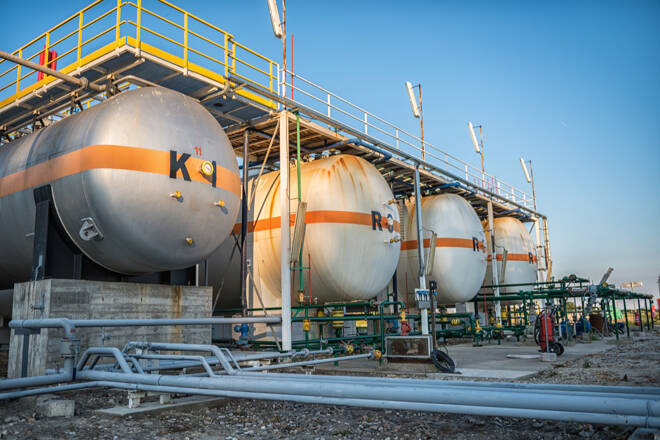Advertisement
Advertisement
Natural Gas Forecast: Prices Higher as Open Interest reaches highest level since October 2021
By:
Despite milder weather forecasts, natural gas prices rose 3% due to decreased output and increased gas flow to export plants.
Highlights
- Natural gas prices increase 3% despite forecasts for milder weather
- NYMEX Gas Futures Open Interest reaches highest level since October 2021
- US Natural Gas Price Decline may slow down drilling activity in Lower 48
Overview
Due to a decrease in daily output and increased gas flow, natural gas futures rose 3% on Wednesday.
Last week, Freeport LNG, a Texas-based export facility, resumed full power operation after an eight-month outage. Despite forecasts for milder weather and lower heating demand, the market recorded an increase in price.
At 15:43 GMT, May Natural Gas futures currently trade at $2.150, up by $0.044 or 2.09%.
However, the market has been quite volatile in recent weeks, with the front-month gaining or losing more than 5% in 12 out of 23 trading days.
NYMEX Gas Futures Open Interest Reaches Highest Level Since October 2021
Open interest in NYMEX gas futures has risen to 1.37 million contracts, the highest since October 2021, for a fourth day in a row. The US Natural Gas Fund, an ETF designed to track gas’s daily price movement, rose to a record 165.9 million shares outstanding, topping the prior record of 161.4 million set on March 30.
US Lower 48 States’ Gas Output Drops to Two-Month Low Despite April Increase
In April, gas output in the US Lower 48 states rose to 99.9 bcfd from March’s 99.7 bcfd. Forecasters expect a daily decline of 2.4 bcfd in gas output over the last three days, which will lead to a preliminary two-month low of 98.5 bcfd on Wednesday.
Most of the declines in the past week occurred in Pennsylvania and West Virginia. According to meteorologists, the weather in the Lower 48 states will remain mostly warmer than normal through April 20, with a few near-normal days from April 6-8.
US Gas Demand to Drop Next Week Despite Above-Average Stockpiles
Refinitiv forecasts US gas demand will drop from 101.7 to 95.2 bcfd next week due to warm weather. This is lower than Tuesday’s outlook. Gas stockpiles remain 21% above five-year average but will end 20% above normal by March 31.
NatGasWeather predicts Unsettled West and Warm South US
NatGasWeather predicts rain, snow, and chilly highs in the West and Plains. Thunderstorms will continue in the East. Texas and the South will be very warm, while a cool shot races across the Great Lakes and Northeast on Friday, leading to slightly stronger demand.
US Natural Gas Price Decline to Slow Down Drilling Activity in Lower 48
Forecasters predict that the decline in US natural gas prices, coupled with increased drilling costs, will slow down drilling and completion activity in the gassy basins of the Lower 48.
Several natural gas basin operators have already announced a reduction in activity, such as Comstock Resources Inc. and Chesapeake Energy Corp.
According to Rystad Energy, OFS prices should remain elevated because of the robust demand from liquids-rich basins.
For a look at all of today’s economic events, check out our economic calendar.
About the Author
James Hyerczykauthor
James Hyerczyk is a U.S. based seasoned technical analyst and educator with over 40 years of experience in market analysis and trading, specializing in chart patterns and price movement. He is the author of two books on technical analysis and has a background in both futures and stock markets.
Advertisement
